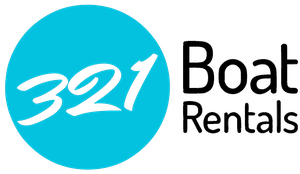We get so many questions about channel markers, and many first-time boaters seem to be really nervous about using them to navigate. Since the waters around 321 are particularly easy to navigate, it’s a great place to practice this for the first time without risk. We’ll teach you everything you need to know about using the markers and give you some tips that make these rules easy to memorize. Read on for the only guide you’ll ever need to identify a channel marker!
How Do Channel Markers Work?
First off, don’t panic, because when you boat with us, we’re going to go over everything as much as is necessary to make you feel comfortable operating the boat. We’ll also be sure to warn you of any potential hazards in the area you’re heading, like shallow water or rocks. If you’re not comfortable operating your rental boat, our experienced and certified captains, Steve and Clay, will be happy to take over and do all the work for you.
Second, it’s fairly easy to understand and remember how the channel markers work with a few tricks. For example, most boaters use a popular alliteration to remember the positioning of channel markers: “red, right, return”. This means that generally, when you’re returning “home” (that is, heading back into the channel, away from the open ocean), the red triangular markers will be on your right, with the green square markers on your left. Logically, if the opposite is true and you’re heading out to the open ocean via the channel, the opposite will be true of the markers, leaving the green markers to your right and the red to your left until you turn back. However, we all get a bit turned around in the channels sometimes, and we have another foolproof trick for figuring out where the markers should be before you end up bogged down in sand waiting for us to come rescue you!
Because the red and green markers on posts in the channel mark each side of the safe boating area, you simply need to steer between them where they form a clear “lane” of passage. This principle is often remembered with the common rhyme, “red and green, stay between”. Try to stay towards the right to allow oncoming boats to pass, just as you do on the road while driving. However, it’s not so simple when you only have a red or green marker on one side. In these conditions, you’ll need to be aware which side of the marker is safe to pass on to avoid “running aground” and getting stuck or causing a more serious issue. Only if you encounter a single marker that’s BOTH red AND green can you safely pass to either side of the marker. However, the color positioned on top of the marker is the preferred side to pass, so we generally just treat these like normal markers of the top color. If you encounter just one marker to your left or right, there are a few different ways to distinguish how to navigate around them.
The numbers on the channel markers can tell you beyond any doubt where they should be in relation to your vessel. The markers increase by evens or odds (all the numbers on the red markers are even and all the numbers on the green markers are odd). If you’re within sight of two markers, see which direction the numbers are going. The red channel markers should always be on your right when the numbers are increasing. It’s also a good idea in general to keep an eye on the color of the water where your boat is heading, as shallow-water areas often appears brown or tan rather than blue or green.
What Other Markers Should I Be Aware of?
You should avoid dive flags at all costs, giving them a wide berth. These flags indicate where a diver is below the water, but they’re not likely to be directly beneath it. According to Florida law, a diver should make a reasonable effort not to stray more than 100 feet from their “diver down” flag. As the operator of a boat, you have an identical obligation to make your best effort to stay at least 100 feet away from the flag at all times. We prefer at least double this distance unless we’re operating at very low speeds (for example, pulling in to anchor on a sandbar). Obviously, you should also avoid marked watersports areas, swim areas, and ski areas unless you’re engaging in these activities yourself, and practice extra caution around them.

With these basic tips on reading channel markers, you’ll have no problems at all navigating the waterways around 321. We’ll also be happy to give you tips on the best sandbars and beaches to visit, restaurants and shops, and areas where we most often spot manatees and dolphins. There’s no shortage of things to see around 321 and the Indian River Lagoon is very easy to navigate, making it a perfect spot for first-time boaters to get their feet wet. Don’t forget that if you visit us on Wednesdays, all your sporting equipment (fishing poles, wakeboards, tubes, and more) is free with your boat rental!
